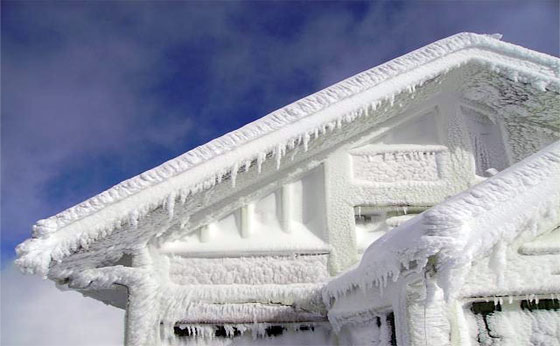When You Lose Power For A Week And Temps Are Below Freezing
If you live in a climate where winter temperatures readily fall below freezing, you have special concerns (or at least you should) about what you would do if you lost power for a week.
Your biggest concern will probably (rapidly) become HEAT, more specifically the lack thereof…
What will you do?
The foremost obvious answer is to fire up your wood stove. The problem is, most of you probably do not have one. If you do, you can stop reading here… ;) (just kidding – lets hear your opinion anyway)
Related article: Best Wood Stove For Preparedness?
If you have a pellet stove, you’re SOL because most of them require electricity to function.
Your oil fired furnace? Fuhgeddaboudit…
Your outdoor LP (propane) tank and accompanying furnace? No worky…
Electric heat? LOL…
Other than those of you who have electric heat, you will be able to keep your furnace running by firing up a generator. The generator does not have to be a ‘whole house’ beast, it only has to be big enough to power your critical systems – the primary of which (in the winter) is your heat (and your well pump if that applies to you). The rest is bonus… keeping the fridge and freezer going… some lights on in the house…
I will not get into ‘how’ to integrate a generator into these critical systems, but know this – it can be done. Either do-it-yourself (if you’re qualified) or hire an electrician to do it. Some methods cost more than others, but if you’re serious about a week-long (or longer) blackout during the winter months, then you better ‘get-r-done’…
For those of you who have only electric heat (there were a lot of homes built this way when energy was cheap years ago), even a beast of a home generator will probably not keep up with the demand without shelling out BIG bucks for 20kW system (for example). Bear in mind though, that even a moderate size generator will be able to run one or two portable electric heaters (better than nothing) but that won’t keep your whole house from eventually freezing.
Awhile ago I discussed portable heating in the following article,
“‘Mr. Heater Buddy’ for Winter Survival Preparedness”.
This is one reason that I am integrating a solar PV system (and battery bank) to keep the critical systems in my house ‘up and running’. Plus, it doesn’t require gasoline and it runs completely silent.
If the power goes out during the winter, and you believe that it might last a week, some of your decisions will be steered by the current weather and forecast. For example if you do not have a method to keep the house heated, and if the temperatures during the day are above freezing while only dipping below at night, your whole house although getting colder may itself stay above freezing – therefore saving your water pipes from bursting… On the other hand, if below freezing temperatures are significantly outweighing above freezing temps, you might consider draining the water from your pipes. Do some advanced research (prior to having to do this for real) and discover the lowest water spigot or drain-plug in your house – which you could theoretically open up during a cold weather emergency (after having shut off the ‘main’ water to the house) to drain the water from the pipes (open all faucets to assist in the draining process).
A home that is very well insulated and ‘tight’ will do a remarkable job keeping any heat ‘in’ while keeping cold ‘out’. In homes like these, several portable type heaters will likely keep the house adequately heated. Wearing layers of winter clothes will obviously help ;)
Related article: The Warmest Survival Blanket – Wool Or Polar Fleece?
Lets hear from you… What are your ideas regarding ‘what to do’ or staying warm when you’ve lost power and the temperatures are below freezing – while potentially facing a week?

